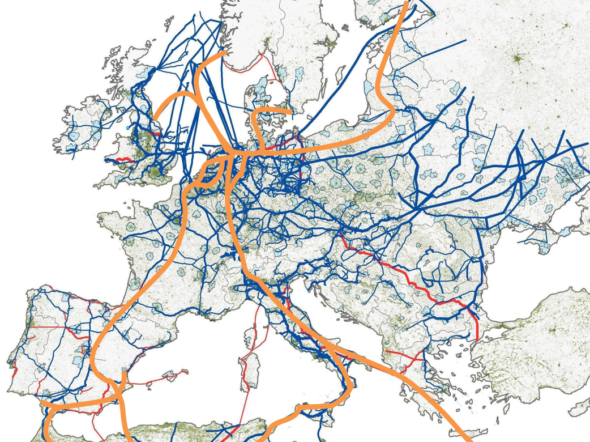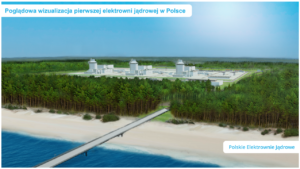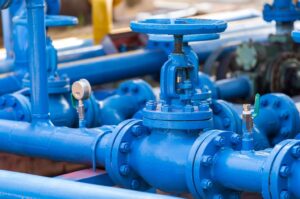EU documents confirm that gas infrastructure capable of transporting hydrogen and biogas will be eligible to receive EU support. It’s time to start building a Hydrogen Ready Poland – writes Wojciech Jakóbik, editor in chief at BiznesAlert.pl.
Hydrogen is a key to the EU treasury
After the 10-11 December summit, during which the member states reached a budget compromise with Poland, the European Council adopted conclusions titled Towards a hydrogen market for Europe. The Council called on investigating the potential of using the existing gas transmission infrastructure in a decarbonized power system to transport hydrogen, especially from renewable sources (i.e. green hydrogen). The Council stressed the importance of renewable hydrogen, which will play a „key role for the achievement of the decarbonisation objective”, which entails the planning for additional renewable capacity to generate it. The European Commission is to come up with support mechanisms for the technology to create an EU hydrogen market with the help from the European Investment Bank, the Connecting Europe Facility, and others. This is why the Polish Power Exchange provides for hydrogen trade in the future.
At first the so-called hydrogen valleys are to be created, i.e. energy clusters where hydrogen is generated. They will drive the economy based on that fuel at a national a regional scale in the European Union. The hydrogen from the valleys will reach various places on the map thanks to transmission infrastructure. Developing the hydrogen market will involve „various models for growth”, as well as the import of that fuel if necessary. This is why the transmission infrastructure that will be built, should carry hydrogen from various sources, but all of them should be labeled as meeting a „European standard”, so that the clients will be able to pick fuel from „clean” sources. This label would be similar to the guarantee of origin on the energy market, which makes it possible to buy this commodity produced from green sources. The new infrastructure will be used by the member states to buy and sell hydrogen to reduce the dependence on import. Wherever possible, gas transmission infrastructure should be upgraded to accommodate hydrogen. The Council advises that the Trans-European Energy Network should be revised to support hydrogen infrastructure development where justified, especially in places where that solution is most profitable. The Council also stipulates that „this does not preempt potential repurposing of gas infrastructure which is under development or planning, including those projects having been granted a PCI status”.
The European Commission announced it adopted on the 16th of December a proposal to review the EU regulations on the trans-European energy networks (TEN-E regulation), in order to better support the modernization of the trans-European energy infrastructure and to achieve the European Green Deal targets. The TEN-E policy supports the transition through Projects of Common Interest, which have to contribute to achieving the EU emission reduction targets by 2030 (at least 55 percent) and the 2050 climate neutrality target. The updated regulation will ensure that new projects will be aligned with the targets in relation to market integration, competitiveness and security of supply. „But our ambitious climate targets demand a stronger focus on sustainability and new clean technologies. This is why our proposal prioritises electricity grids, offshore energy and renewable gases, while oil and natural gas infrastructure will no longer be eligible for support,” Commissioner for Energy Kadri Simson said. The EC wants to move away from financing gas infrastructure, but the European Parliament and the Council need to agree on that idea. The latter institution does not want to exclude gas infrastructure as long as it contributes to decarbonization. This is where Poland and other states that want to keep on using gas need to act.
How to maximize EU support?
The EC provided details on what investments should be given the TEN-E support. One could imagine that all hydrogen-related projects will be added to the PCI list, similarly to the LNG terminal and the Baltic Pipe. This means as much as half of the cost of those investments will be covered by the EU. It’s worth sharing a few thoughts about some of the proposals in the EC document, which includes, among others:
• an update of the infrastructure categories eligible for support through the TEN-E policy, ending support for oil and natural gas infrastructure
This means, gas and oil infrastructure will not receive any EU funds, unless it contributes to decarbonization. Therefore, any planned projects of this type should include this target to maximize EU support. This is not just about redesigning the existing gas pipelines to accommodate hydrogen, but also about designing new pipes capable of carrying hydrogen, that would be generated in, e.g., future gas-fired power plants and nuclear power plants. In such cases, EU support will be granted, which will make companies such as Poland’s Gaz-System or Polska Spółka Gazownictwa that are planning to expand the gas transmission network in Poland, happy.
• a new focus on offshore electricity grids with provisions facilitating more integrated onshore and offshore infrastructure planning and implementation through the introduction of offshore one-stop-shops
Provided that offshore electricity grids will make it possible to develop the first hydrogen cluster that will generate that fuel from the surplus of renewable energy, we could already start planning new accompanying infrastructure that will be in line with the EU targets, because this is the way to acquire funds for an installation port, connections for offshore wind farms, and perhaps even infrastructure that will integrate the offshore farm with nuclear power plants that will stabilize the RES source.
• a new focus on hydrogen infrastructure including transport and certain types of electrolysers
The electrolyzers that will be used to generate hydrogen, which will one day be installed near the above-mentioned mega projects in Poland, will be eligible for EU support as well. The companies that want to produce them should submit their projects to the European Commission as soon as possible, so that they are included on the list.
• continued attention to the modernisation of electricity grids and storage and carbon transportation networks
It is worth mentioning that gas pipelines can also be used to transport CO2, captured at different stages of the energy and hydrogen generation process, to then store it (the CCS technology) in and outside of the European Union. This is especially important in the context of cooperation with Norway, with which Poland will be connected thanks to the Baltic Pipe, which in the future may transmit in both directions hydrogen, biogas, as well as CO2 to the storage facilities Norway is planning to develop. Importing hydrogen to Poland may cover any shortages caused by the insufficient availability of RES in Poland’s energy mix. CCS will make it possible to decarbonize the blue hydrogen produced from gas, which means it will make it possible to produce hydrogen other than green, which is currently being favored. It should be stressed that thanks to Poland and other states that are hoping to generate hydrogen from gas, stipulations about the various kinds of hydrogen were added to the European energy mix regulations.
• new provisions on support for projects connecting the EU with third countries (Projects of Mutual Interest or PMIs) that demonstrate their mutual benefit and contribution to the Union’s overall energy and climate objectives in terms of security of supply and decarbonisation
Ukraine’s gas transmission operator OGTSU has already informed that in the future Ukraine will be able to deliver hydrogen and gas to the EU; and that the country will adapt its gas infrastructure to do that. So, it may turn out that the gas cooperation between Poland and Ukraine, may develop into trading renewable gases bankrolled with EU subsidies. This may mean that the subsidies that the Poland-Ukraine gas pipeline needs, may be granted if the project is hydrogen ready.
The beginning of hydrogen is not the end of natural gas
Yet again, it looks like the the history won’t end for the gas market, but instead it may change its image. Renewable gases, such as hydrogen and biogas, will appear more frequently on the agenda, but the interest in natural gas will wane. Adopting the gas sector decarbonization target will keep the EU subsidies coming and prolong the lifespan of such gas projects as the Baltic Pipe and the LNG terminal in Świnoujście, which without the money would not be able to operate for decades in the decarbonization era, despite the fact they were originally designed to work that long. If they contribute to the growth of the hydrogen market and other renewable gases, they will not turn into stranded costs, and instead will become valuable tools of Poland’s and the EU’s energy and climate policy. They will again become an alternative to Russian projects, such as the Nord Stream 2, via which hydrogen could be transported to Europe, but for energy security reasons it would not be the best choice. EU strategists are already drawing hydrogen transmission pipes that will constitute the new market, and hydrogen lobbyists are publishing reports on the topic, such as Hydrogen Europe. Poland should add as many of its own projects to this map as possible.









